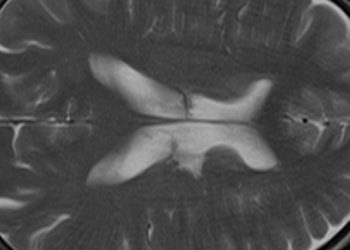The CHOICE trial: Balloon-expandable vs. self-expanding transcatheter aortic valve replacement
Image: PD
1. Device success occurred at a significantly higher rate in the balloon-expandable group as compared to the self-expanding group.
2. There was a higher rate of more-than-mild aortic regurgitation seen in the self-expanding group as compared to the balloon-expanding group.
Evidence Rating Level: 1 (Excellent)
Study Rundown: Transcatheter aortic valve replacement (TAVR) has emerged as a revolutionary alternative to surgical aortic valve replacement (SAVR), currently approved in inoperable and high-risk groups of patients with severe symptomatic aortic stenosis. Although several percutaneous devices are now approved in Europe, currently there are only two such approved devices in the United States: a balloon-expandable device (Edwards Sapien valve) and a self-expanding device (Medtronic CoreValve). Although there have been studies comparing the efficacy and safety of these two devices from registry data, this is the first trial to do so in a prospective, randomized multi-center design. The investigators in this trial found that the primary endpoint of device success—which is a composite of successful vascular access and deployment of the device, retrieval of the system, correct position of the device, and performance of the valve without moderate or severe regurgitation—was seen at a significantly higher rate in the balloon-expandable valve group. Strengths of the trial include its robust design and its use of several important secondary end points. Long-term results of this trial can help tailor the decision of which valve to insert depending on several patient characteristics.
Click to read the study, published today in JAMA
Click to read an accompanying editorial in JAMA
Relevant Reading: Do Outcomes from Transcatheter Aortic Valve Implantation Vary According to Access Route and Valve Type? The UK TAVI Registry
In-Depth [randomized controlled trial]: This study was designed to compare the success rate of the balloon-expandable vs. the self-expanding systems for TAVR. 241 patients with severe aortic stenosis, symptoms defined as NYHA heart failure class II and above, and who were high risk for SAVR were enrolled at 5 centers in Germany and were randomized to receive one of the two valves. All patients received the assigned device with no crossovers. The primary end point of device success as described in the study rundown section occurred in 95.9% of patients in the balloon-expandable group and 77.5% of patients in the self-expanding group (RR, 1.24; 95% CI, 1.12-1.37, P<.001). This was mostly due to a much lower rate of more-than-mild aortic regurgitation in the balloon-expandable group (4.1% vs. 18.3%; RR, 0.23; 95% CI, 0.09-0.58; p<.001) and less frequent need for more than one valve (0.8% vs. 5.8%, P=.03). There was no significant difference in cardiovascular mortality at 30 days. Also, rates of placement of a new permanent pacemaker were lower in the balloon-expandable group (17.3% vs. 37.6%, P=.001).
©2012-2014 2minutemedicine.com. All rights reserved. No works may be reproduced without expressed written consent from 2minutemedicine.com. Disclaimer: We present factual information directly from peer reviewed medical journals. No post should be construed as medical advice and is not intended as such by the authors, editors, staff or by 2minutemedicine.com. PLEASE SEE A HEALTHCARE PROVIDER IN YOUR AREA IF YOU SEEK MEDICAL ADVICE OF ANY SORT.







